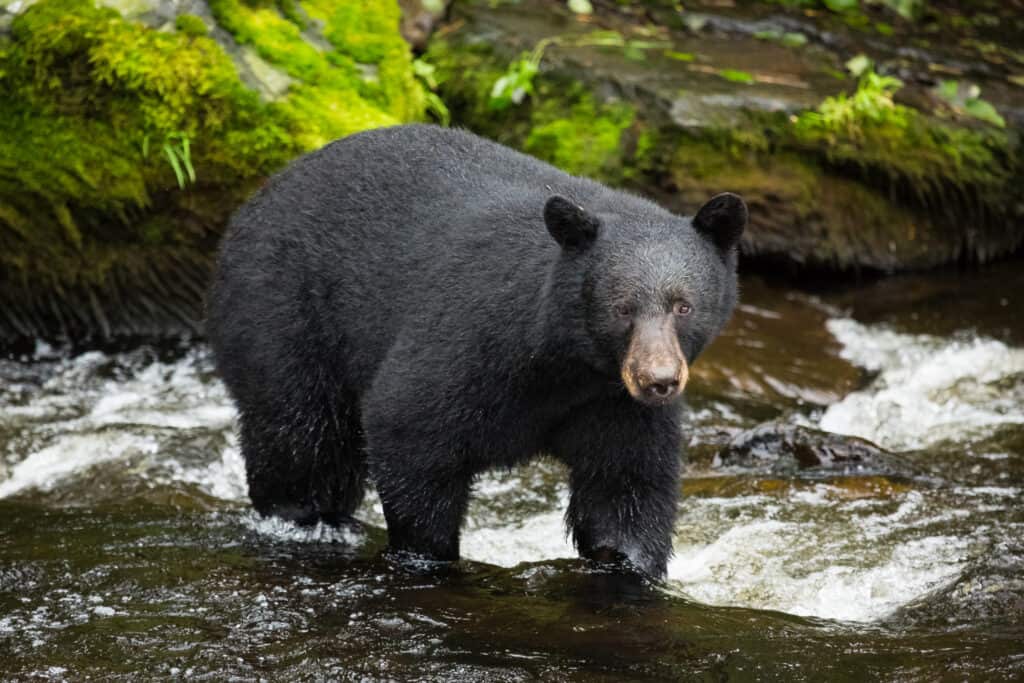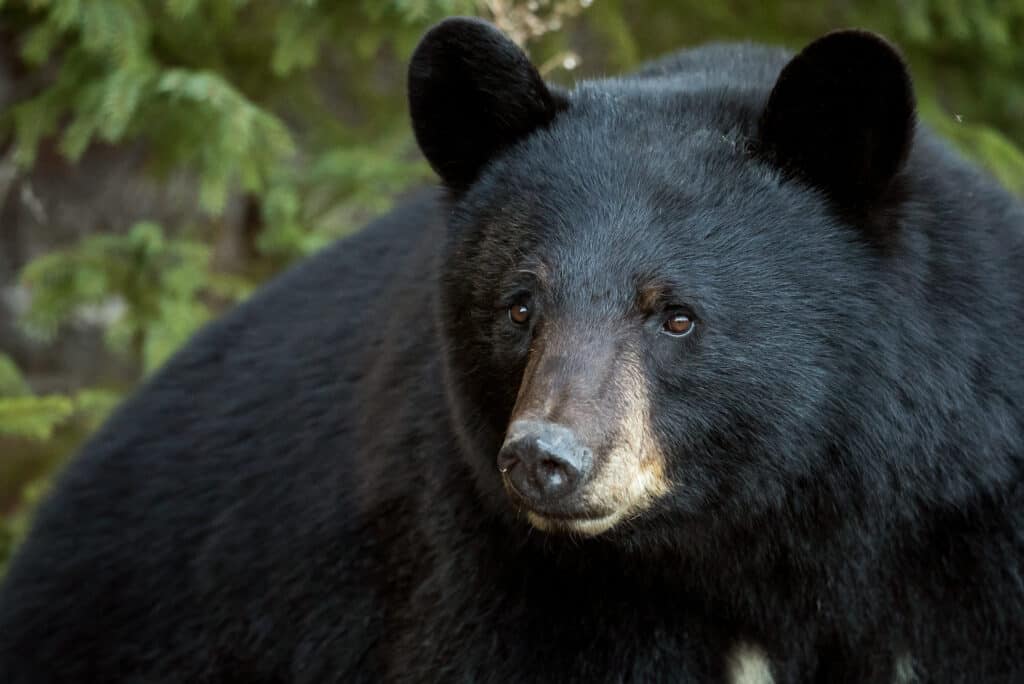Massachusetts has a long and storied history. The Bay State featured the first permanent English colony in New England, the Plymouth Colony, founded in 1620. The city of Boston witnessed several key events that led up to the Revolutionary War, including the Boston Massacre in 1770 and the Boston Tea Party in 1773. A few years later, Shay’s Rebellion instigated mayhem across the state and prompted the government to draft a stronger federal constitution. Up to the present day, Massachusetts continues to play a central role in American politics, culture, and economics.
Thanks to the state’s amazing history, people often forget about Massachusetts’s ecological diversity. Although much of the state’s old-growth forest no longer remains, forests continue to cover 62% of the state’s landmass. You can find numerous animal species within the wild and domesticated spaces across the state. Peregrine falcons, piping plovers, and long-tailed ducks soar above the state, while Harbor seals, American lobsters, and humpback whales live off its shores. In more rural areas, the state supports several large mammal species, including moose, coyotes, and white-tail deer. That said, the largest land carnivores found in Massachusetts are black bears. But how large do bears grow in the state, and do giant bears still roam its less-trodden regions? Let’s discover the largest bear ever caught in Massachusetts.
The Largest Bear Ever Caught in Massachusetts

The largest bear ever caught in Massachusetts weighed 541 pounds.
©SCStock/Shutterstock.com
There are two ways you can measure a bear’s weight: live weight (intact) and field dressed (without the guts). This distinction matters, as many records only list one weight or the other. Generally speaking, the higher the dressed field weight, the higher the live weight, and vice versa. Therefore, a bear with a large field dressed weight should have a larger live weight than a bear with a smaller field dressed weight.
The record for the largest bear ever caught in Massachusetts belongs to a 541-pound (field-dressed) black bear killed in 2012. A hunter shot this massive bear with a rifle during the 2012 hunting season near Southwick, Massachusetts. Unfortunately, Massachusetts does not require hunters to provide bear weights, only to record their kill. However, you can estimate a bear’s live weight based on its dressed weight. To estimate live weight, simply take the dressed weight and multiply by 10% for a small bear, 15% for a medium-sized bear, and 20% for a large bear, and add the product. A 541-pound black bear certainly classifies as large, so an additional 20% yield a result of 649.2 pounds.
Again, all this matters, because the Massachusetts state record for a black bear was almost broken in 2015. During the 2015 hunting season, Jim Mundell, a hunter from Athol, Massachusetts, harvested a 650-pound bear. This live weight would barely put it above an estimate of the state record holder’s live weight. However, Mundell’s bear recorded a field-dressed weight of 498 pounds, well below the state record. Given the difference in dressed weights between the two bears, we can likely add a few pounds to the record holder’s live weight estimate. Mundell’s bear had a live weight of around 30% more than its dressed weight. Using this same percentage, the 541-pound state record holder would have had a live weight of approximately 703 pounds. Now that’s a big bear!
Bears in Massachusetts: Types and Appearance
The only bear species found in Massachusetts is the American black bear (Ursus americanus). The other two bears native to North America – the polar bear (Ursus maritimus) and grizzly bear (Ursus arctos) – do not historically live in New England.
American black bears possess a broad skull but a narrow muzzle. In general, females tend to feature narrower, pointier faces than males. The claws of a black bear typically look either gray or black. Black bears use their claws mostly to dig and climb, so their claws tend to appear rather rounded and short. They possess relatively long limbs (at least when compared to other bears) and short, vestigial tails.
Various factors work together in unison to determine the size of a black bear. Season, age, and sex all matter when factoring in how large a bear can grow. For example, females tend to measure smaller than males, and older bears usually weigh more than juveniles during the same time of year. That said, season likely matters most when determining the size of a single specimen. Black bears put on large amounts of weight in preparation for winter so they can survive hibernation (torpor). Everything else aside, a black bear that weighs 250 pounds in spring will measure significantly more in fall.
Overall, American black bears usually weigh somewhere between 90 and 500 pounds – 90 pounds for a small female in spring and 500 pounds for a large male in fall. Occasionally, larger, older males can exceed 700 pounds, but such males are rare. Most black bears measure 3 to 5 feet in length and can reach 7 feet tall standing on their hind legs.
The majority of black bears feature a brown muzzle and shaggy black coat. Some specimens can appear blue-gray, dark brown, cinnamon, or blonde. These alternative coat varieties occur more commonly in certain regions, such as British Columbia, Alaska, or the Pacific Northwest.
Bears in Massachusetts: Habitat
The historical range of the American black bear included almost the entirety of North America. Black bears primarily live in woodlands and forests but can survive in a variety of habitats, including wetlands, swamps, and alpine regions. They typically avoid deserts and open grasslands except near rivers with riparian vegetation. Unfortunately, the clearing of North American forests ultimately led to the removal of black bears from much of their native range. Today, most black bears live in Canada, Alaska, and parts of the contiguous United States. In particular, black bear populations in the U.S. are highest in New England, the Great Lakes Region, the Rocky Mountains region, and the Pacific Northwest. However, you can find small populations southeast and the Midwest.
Presently, you can find American black bears in the western half of Massachusetts. According to experts, black bears live and breed between northern Middlesex County, Worcester County, and west to the Berkshires. However, you can find some black bears in the central and eastern parts of the state. Since the 1970s, bears have been expanding eastward into western Essex County and Norfolk County. Typically, the bears in the eastern part of the range tend to be juvenile males and young breeding females.
How Many Bears Are There in Massachusetts?

There are about 4,500 black bears in Massachusetts.
©iStock.com/Brittany Crossman
Currently, Massachusetts supports a population of approximately 4,500 black bears. This figure may surprise you, given that Massachusetts ranks as the third most densely populated state in the U.S. However, the state of the black bear population in Massachusetts looked very different a few years ago. Habitat loss and a lack of hunting regulations meant that black bears practically disappeared from the state. Between the 1800s and mid-1900s, few black bears lived in Massachusetts. Thanks to strict hunting regulations and environmental protections, the population slowly recovered to the level it’s at today. According to estimates, the black bear population in Massachusetts continues to grow at a rate of 8% or so per year.
The black bear population in Massachusetts and throughout North America lags behind its historical high. That said, black bears continue to thrive in the state and across the continent. By most accounts, around 800,000 black bears reside in North America. Given strong protections and numbers, the IUCN classifies American black bears as a Least Concern species.
Is It Legal to Hunt Bears in Massachusetts?
For much of its history, Massachusetts did not regulate the hunting of black bears. That all changed in 1952 when the state passed regulations that made it illegal to kill black bears without a license. Additionally, Massachusetts only allows licensed hunters to harvest bears during specific hunting seasons. Currently, Massachusetts operates 3 separate hunting seasons, all of which run concurrently from September to December. In the first two seasons, hunters can use a variety of hunting implements, including rifles, archery, and muzzleloader firearms. The final hunting season excludes rifles but includes the addition of shotguns. Massachusetts forbids the use of dogs while bear hunting and also does not permit bear baiting. Each hunter may only harvest one bear per calendar year.
Are Bears Dangerous?
Despite what you may see in movies or on the news, bear attacks occur extremely rarely. The National Park Services estimates that you have a one in 2.1 million chance of getting attacked by a bear. Moreover, black bears commit fewer attacks than grizzlies, which commit almost twice as many attacks. That said, as people move into more rural areas, this raises the possibility of a fatal bear encounter. By and large, bears tend to avoid people. However, they may attack if startled or threatened, or if you get between them and their food or a sow and her cubs. Generally speaking, black bears do not actively hunt people, although stories of bear predation do exist. If you do run into a bear, here are a few things you should know.
The first and foremost thing to remember during a bear encounter is: don’t panic. By remaining calm, you vastly improve your odds of survival. If you spot a bear in the distance, move in the opposite direction while keeping your eyes on the bear. Avoid turning your back on the bear, and – whatever you do – do not run away. A black bear can run nearly 30 miles per hour, so if the bear decides to give chase, you won’t outrun it. If the bear starts moving toward you, try to drive it off by making loud noises. Shout, sing, clap your hands, bang on pots and pans – do whatever you can to make loud sounds. Bears often make “bluff charges,” so if a bear charges you, remember to stand your ground and maintain eye contact. Usually, the bear will abort its charge and give you time to slowly back away.
If you encounter a bear near or inside your home, provide it with escape routes by propping your doors open. Ideally, you should keep a bear contingency kit at home with a whistle or air horn and bear spray. These tools can help you ward off or drive off a bear and give you time to get to safety. Lastly, if a black bear does attack you, fight it with all your might. Aim blows at the bear’s face, and use any weapons you can, such as rocks, sticks, or bear spray. Do not play dead – this tactic only works against grizzlies or brown bears, as they are not scavengers, unlike black bears.
Conclusion
Massachusetts supports a medium-sized population of American black bears. Although most bears live in the western part of the state, their territory and population continue to expand each year. The state continues to regulate hunting and may issue more licenses in the future as the population continues to grow. As long as they do, the record for the largest bear ever caught in Massachusetts may continue to change hands.
The photo featured at the top of this post is © iStock.com/Mark Lee
Sources
- , Available here: https://www.southcoasttoday.com/story/sports/outdoors/2016/01/09/blue-hills-deer-hunt-enjoys/32773328007/
- , Available here: https://www.mass.gov/service-details/black-bear-harvest-data
- , Available here: https://www.mass.gov/service-details/learn-about-black-bears#:~:text=Black%20bears%20live%20and%20breed,themselves%20east%20of%20Route%20495.
- , Available here: https://www.massaudubon.org/learn/nature-wildlife/mammals/bears
Thank you for reading! Have some feedback for us? Contact the AZ Animals editorial team.






